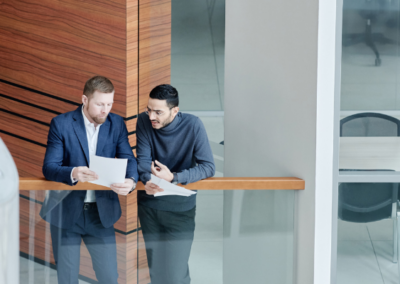Below are a five aspects that healthcare founders need to clarify in their pitch to venture capitalists in order to increase their chances of receiving funding at the seed-stage.
Too often, founders will launch into describing their products without first giving background on the problem they are working on solving. A product’s value only makes sense within the context of a specific problem. Don’t assume an investor is extremely familiar with the problem your solution is targeting. Founders are giving investors too much credit. Spell it out for them. At Jumpstart, we are “Industry-First” investors.
We like to see founders who can clearly articulate the market pain point they are working on alleviating.
Once the pain point is defined, the founder then needs to demonstrate the value of the product in light of the current incentive structure that exists in healthcare between payers, providers, and consumers. Too often, the questions of “who pays”, “why”, and the size of a correctly calculated total addressable market are left unclear at the end of a pitch.
An early-stage investor is taking a bet largely on a founding team. Many investors generally want to see a founding team that has had success in their careers and were educated at top schools. More importantly for healthcare though, is high familiarity with the problem a founder is working on solving. With healthcare being tightly regulated and with incentives commonly being more complicated than what they appear to be on the surface, someone with intense familiarity with the problem is usually needed to produce a solution properly situated between audacious and feasible. Demonstrating deep knowledge of the problem a founder is working to solve is imperative. At the end of the day, a founder needs to demonstrate unique insight that allows them to alleviate a pain point in a way others have not been able to up to this point. Vis-versa applies for entrepreneurs choosing their investors— here are 5 Things to Consider When Choosing an Investor.

Many founders have opportunities to pilot their solution, but do not collect the data they need to draw proper conclusions. Founders need to make sure they are collecting the data they need on their assumptions so they can quickly move from pilot mode to convincing organizations to purchase their solution. For example, some founders will loosely touch on what they are going to do with the money raise. Most of the time, it is a pie chart with a breakdown of salary for new hires, marketing, product development, and overhead. While this can be somewhat useful, it is incomplete. Early-stage startups are making assumptions about finding product-market fit and understanding the market’s needs. Here at Jumpstart, we like to see a breakdown of assumptions and a plan to test those assumptions. We like to see the founders view our investment as a means to begin to test the assumptions they are making of the market. Check out these 5 Financial Tips for Entrepreneurs written by the CFO of our firm.
As assumptions are tested and feedback is gathered, a company begins to de-risk itself and make itself attractive to other partners and investors down the road.
Those who are clear about what they are doing will still receive a fair amount of “No’s”. It’s inevitable. However, those that are unclear about what they are doing, will never get a “Yes”.
Founders need to come to terms with the fact that there will be investors who do not agree with their value proposition, who do not think the product is differentiated, or who do not think the founders have the correct backgrounds. A “No” decision from an investor can be reached for so many reasons (some more legitimate than others). The one thing a founder absolutely needs to control for in a pitch though is clarity.
There are always going to be investors that don’t agree with the founder’s vision, but a founder cannot afford to lose those investors who would have said “Yes,” but pass because the founder failed to tell a clear story.







